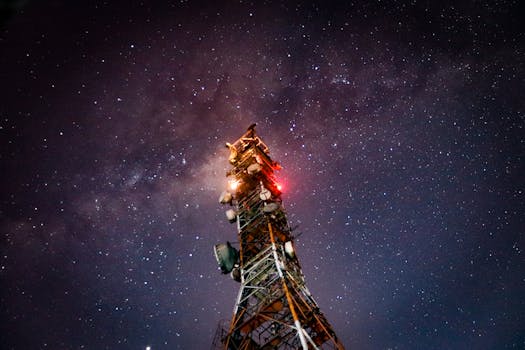
MEO Satellites: The Future of Global Communication
MEO satellites, or Medium Earth Orbit satellites, are a type of satellite that operates at an altitude of approximately 2,000 to 36,000 kilometers above the Earth’s surface. This orbit is significantly lower than the Geostationary Orbit (GEO) used by traditional satellites, which is approximately 36,000 kilometers above the equator. The lower orbit of MEO satellites allows for faster and more reliable communication, making them an attractive option for a wide range of applications, including telecommunications, navigation, and Earth observation.
The focus on MEO satellites has been increasing in recent years, as companies and organizations seek to take advantage of the benefits they offer. One of the primary advantages of MEO satellites is their ability to provide faster communication than traditional GEO satellites. Because they are closer to the Earth, MEO satellites have a shorter signal delay, which is the time it takes for a signal to travel from the Earth to the satellite and back again. This shorter signal delay makes MEO satellites ideal for applications that require real-time communication, such as video conferencing and online gaming.
How MEO Satellites Work
MEO satellites work by using a network of satellites in medium Earth orbit to provide communication services. Each satellite in the network is connected to several others, allowing data to be transmitted from one satellite to another and eventually to its destination on the Earth’s surface. This network of satellites is often referred to as a constellation, and it can be used to provide a wide range of communication services, including voice, data, and video transmission.
One of the key technologies used in MEO satellites is beamforming, which allows the satellite to focus its signal on a specific area of the Earth’s surface. This technique is used to increase the strength of the signal and reduce interference from other satellites or sources. MEO satellites also use advanced propulsion systems, such as ion engines, to maintain their orbit and ensure that they remain in the correct position.
Applications of MEO Satellites
MEO satellites have a wide range of applications, including telecommunications, navigation, and Earth observation. One of the most significant applications of MEO satellites is in the provision of broadband internet services. Companies such as O3b Networks and SES are using MEO satellites to provide high-speed internet connectivity to remote and underserved communities around the world.
MEO satellites are also being used for navigation, particularly in the provision of precise location and timing services. The European Space Agency’s Galileo navigation system, for example, uses a constellation of MEO satellites to provide accurate location and timing information to users around the world. Additionally, MEO satellites are being used for Earth observation, including weather forecasting, climate monitoring, and disaster response.
Challenges and Future Developments
Despite the many advantages of MEO satellites, there are also several challenges associated with their development and deployment. One of the primary challenges is the high cost of launching and operating a constellation of MEO satellites. This cost can be significant, and it has been a barrier to entry for many companies and organizations.
Another challenge facing MEO satellites is the issue of orbital congestion. As more and more satellites are launched into medium Earth orbit, there is a growing risk of collisions and interference between satellites. This risk can be mitigated through careful planning and coordination, but it remains a significant challenge for the industry.
Despite these challenges, the future of MEO satellites looks bright. As the demand for global communication and connectivity continues to grow, the need for fast and reliable satellite communication services will only increase. Companies and organizations are investing heavily in the development of new MEO satellite technologies, including advanced propulsion systems and more efficient beamforming techniques. As these technologies mature, we can expect to see even more innovative applications of MEO satellites in the years to come.




